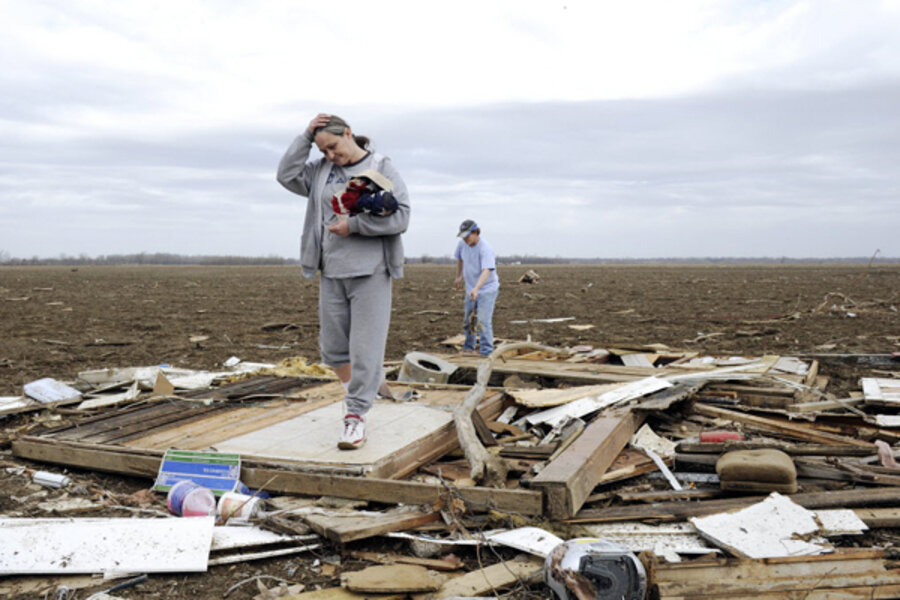Storm system causes damage in Kentucky, flash-flood threat in West Viriginia
| Atlanta
Creeks and streams have breached banks in mountainous north-central West Virginia, the National Weather Service reports, as a deadly storm system that spawned multiple tornadoes in the Midwest moves into the Appalachian Ridge.
“Local officials reported heavy rainfall ... with many streams already coming out of their banks,” the latest National Weather Service flash-flood warning said.
West Virginia cities and towns including Glenville, Weston, Philippi, Elkins, and Buckhannon were expected to bear the brunt of heavy rainfall associated with a storm system that moved out of the Rockies earlier this week. It raked the Midwest overnight Tuesday with tornadoes that killed at least nine and destroyed parts of Harrisburg, Ill.; Branson, Mo.; and Harveyville, Kan.
The storm system is part of an active early tornado season, in which two people in Alabama were killed by tornadoes last month.
Last year was one of the deadliest in tornado history in the United States, with 550 dead, thousands injured, and $10 billion in total damage – most from an April 27 outbreak that leveled large parts of Tuscaloosa, Ala.
On Wednesday, authorities in Kentucky have reported a significant degree of destruction, including homes leveled by winds in LaRue County, major wind damage to homes and businesses in Hardin County, and a flash flood washing across Highway 743 in Edmonson County.
So far, problems in West Virginia have amounted to myriad road closures, but that assessment could change.
“The biggest concern was earlier in Lewis County, where every stream in the county was out of its banks,” says National Weather Service meteorologist Thomas Mazza in Charleston, W.V. “Right now [the threat] is jelling into one big area, but we're predicting most of the system will have moved out by 8 p.m. tonight.”
West Virginia, with its combination of steep valleys and degradation from mountaintop mining, is particularly vulnerable to flash floods. One of the worst flash-flood disasters in US history occurred near the town of Man on Feb. 26, 1972, when 118 people died and 4,000 people were left homeless after a mining slag dam on Buffalo Creek burst under the pressure of torrential rains.
More recently, in May 2009, more than 300 homes were destroyed by flash flooding across six West Virginia counties.





